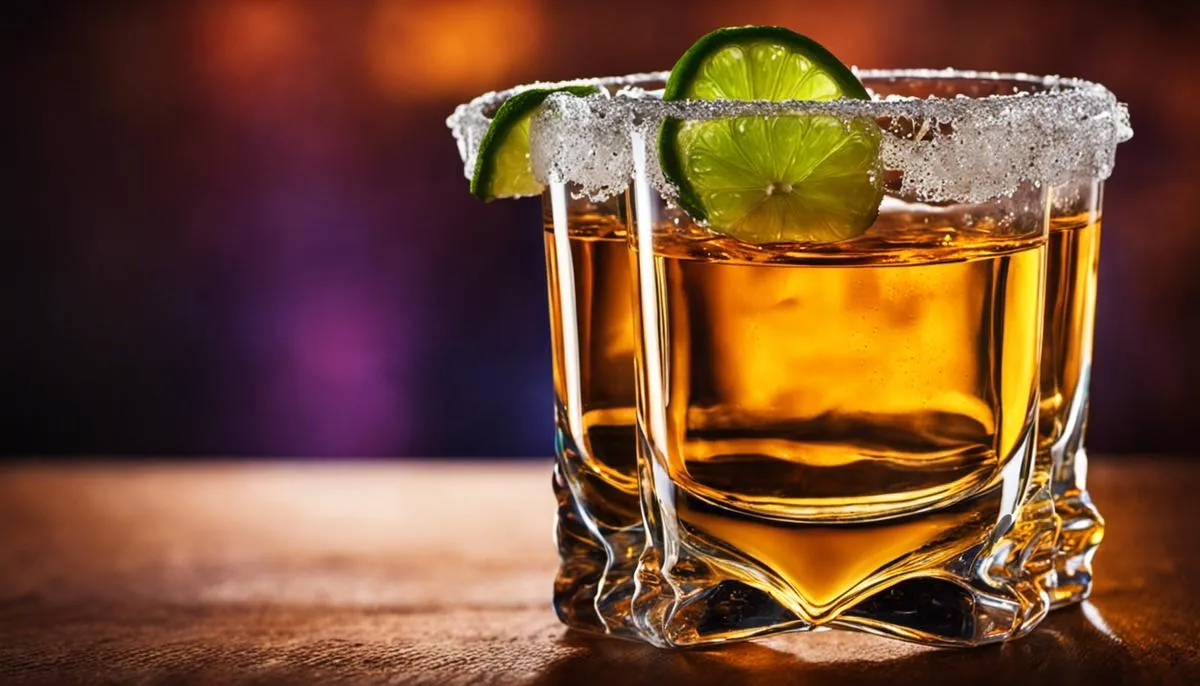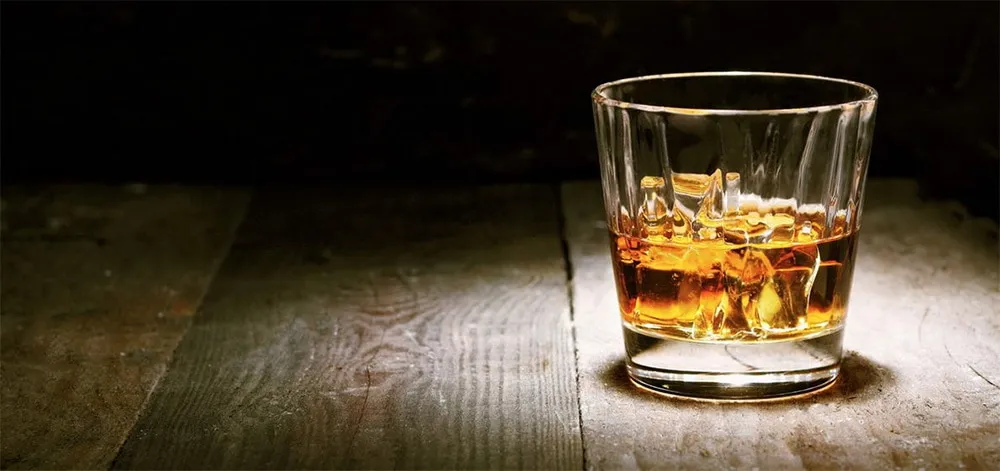Awash in rich history and bold flavor, the tequila shot takes up its own unique space in the global culture of spirits. From the sun-scorched fields of blue agave in Mexico to the bustling bars in New York’s Time Square, the unchanging ritual of ‘lick, sip, suck’ transcends borders and backgrounds. Ahead we’ll embark on a spirited journey – tracing the origin and evolution of tequila shots, understanding the intricate process of tequila making, discerning the differences among its various types and quality levels, mastering the art of taking tequila shots, and exploring food pairings and cocktail recipes that accentuate the nuanced character of this intriguing liquor. Let’s raise a toast to our tequila enlightenment journey ahead!
The History and Origin of Tequila Shots
Origins of Tequila Shots
The birthplace of tequila shots is the town of Tequila, located in the state of Jalisco, Mexico. The fermented beverage produced from the blue agave plant was first crafted by the native inhabitants of Mexico over two thousand years ago. This ancient brew was considered sacred and was primarily consumed in ceremonial rituals. However, it wasn’t until the 16th century, when the Spanish conquistadors arrived, that the drink evolved into the tequila we know today. They started to distill this fermented beverage, creating a stronger alcohol called Mezcal, which is understood to be the predecessor of modern tequila.
Cultural Significance
Over the centuries, tequila has woven itself into the fabric of Mexican culture. It has been, and continues to be, a symbol of national pride and heritage in Mexico. The tequila shot, specifically, has a set of traditions associated with it. Notably, the ‘lick-shot-suck’ method is familiar throughout the world, involving licking salt off the hand before taking the shot and following it with a bite of lime. However, in Mexico, tequila is often simply sipped alongside a ‘sangrita’, a non-alcoholic beverage typically made with tomato juice, orange juice, lime, chili powder, and sometimes grenadine, to cleanse the palate and enhance the flavor.
Evolution of Tequila Shots
The tequila shot has seen many changes in presentation and consumption. While it was once harsh and meant to be swiftly consumed with the accompaniments of salt and lemon to mask the taste, today’s tequila, particularly high-quality brands, are to be savored and appreciated for their complex taste profiles. In upscale bars and restaurants, premium tequila may be served in specific tequila glasses such as a ‘jarrito’ or a ‘tulip’ to allow the aromas and flavors of the tequila to be fully experienced, similar to how whiskies or wines are served.
In addition to the rise of premium tequilas, innovative variations of the traditional tequila shots have emerged in recent years. For instance, some establishments serve infused tequilas, where the spirit has been steeped with ingredients such as jalapeño, pineapple, or hibiscus, offering unique flavor profiles. In the mixology world, tequila is also a key ingredient in many infamous cocktails, including the Margarita and the Tequila Sunrise.
Tequila, known for its origins in Mexico, has crossed borders and ascended from being a humble regional spirit to a globally appreciated alcoholic beverage. Every shot consumed is a nod to Mexico’s rich history and vibrant culture, serving to keep the essence of Tequila intact.
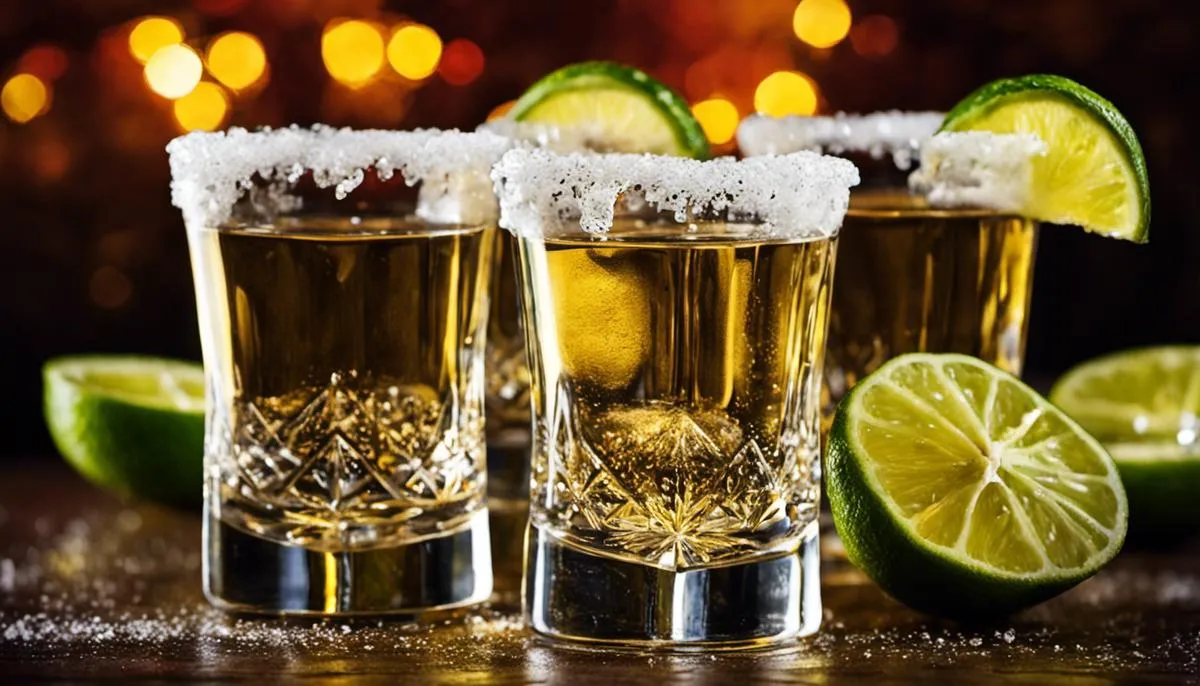
The Process of Making Tequila
Understanding The Blue Agave Harvesting Process
The journey of Tequila begins at its source: the blue agave plant, scientifically recognized as Agave tequilana. These desert-dwelling plants ideally grow in five Mexican states including Jalisco, Nayarit, Guanajuato, Michoacán, and Tamaulipas, mainly due to the ideal volcanic soil present there. It takes anywhere from seven to ten years for the blue agave to mature. Once it has reached maturity, the plant is hand-harvested by experienced farmers called “Jimadores”. They skillfully remove the plant’s large, spiky leaves to uncloak the “piña”, which translates to the core or heart of the agave plant. This piña, interestingly, bears a strong resemblance to a giant pineapple.
Cooking and Extracting the Sugars
The piñas are transported to distilleries where they are cut into halves or quarters and then slowly cooked in large ovens or autoclaves. This process could take anywhere from a few hours to a few days, depending on the method used. The cooking process converts the plant’s complex carbohydrates into simple sugars. The cooked piñas are then crushed, traditionally by a large wheel known as a Tahona, to extract the sweet juice, which is called “aguamiel” or honey water.
Fermentation
The aguamiel is transported into open or closed fermentation tanks where it is left to ferment naturally, though some commercial producers might add yeast to speed up the process. Over time, the sugars in the aguamiel are converted into alcohol, producing a beer-like substance known as “mosto” or “tepache”.
Distillation
This mosto is then distilled twice in copper or stainless steel pot stills. The initial distillation, known as “destrozamiento” or “destruction”, results in a raw, low alcohol spirit called “ordinario”. The second distillation, “rectification”, refines the product further, increasing the alcohol content and enhancing the flavor.
Aging
After distillation, the newly created tequila may be aged, which is where classifications come in. “Blanco” or white tequila is not aged at all, while “Reposado” and “Añejo” are aged in wooden barrels for two months to a year and one to three years respectively. The barrels lend the tequila a golden color and complex flavors. The highest classification is “Extra Añejo”, which is aged for more than three years.
Tequila Shots
When it comes to enjoying tequila in shot form, Blanco or white tequila is often the choice because of its clear, crisp flavor. It is typically served with a side of lime and a pinch of salt. The salt is licked off your hand before downing the shot, and the lime is bitten afterwards to balance and enhance the potent flavors of this iconic Mexican spirit. However, the aged Añejo tequilas, with their deeper, smoother flavors, are often favored for sipping rather than shooting.
The art of creating tequila is a meticulous process, starting from the cultivation of blue agave plants in the fields to rigorously following every step of the fermentation and distillation. It crafts a spirit that stands out with its distinctive aroma and rich flavor, whether you savor it in a shot or sip it leisurely.
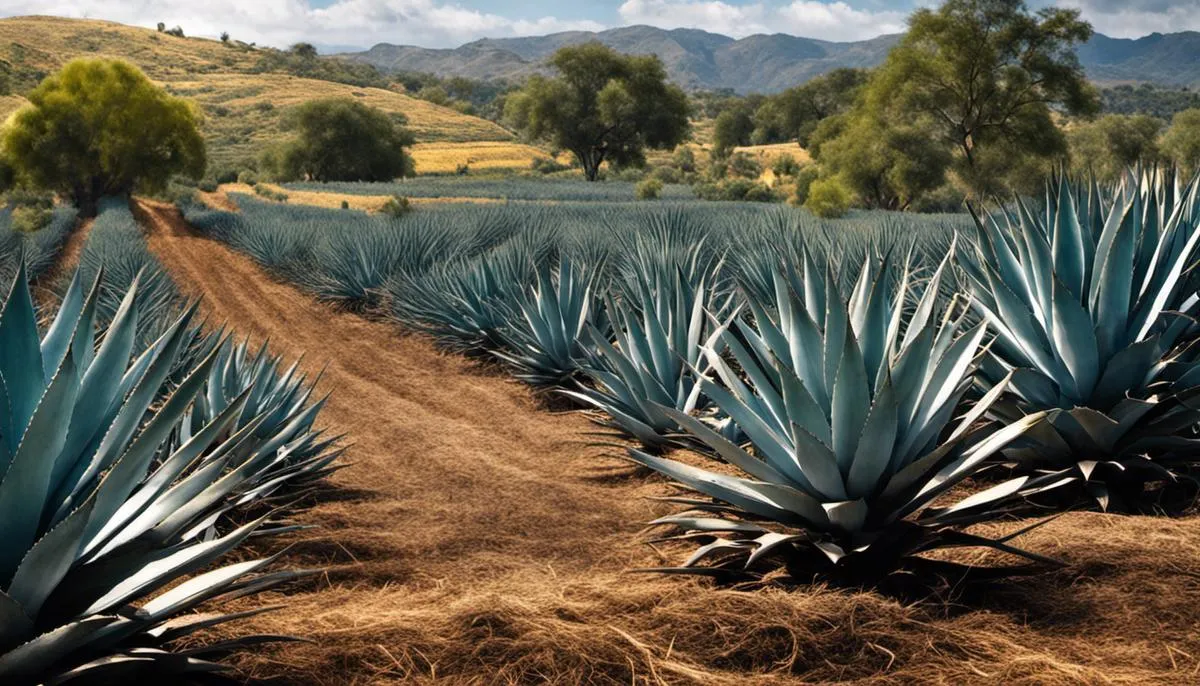
Type and Quality of Tequila
Different Varieties of Tequila
This quintessential Mexican spirit, principally crafted from the blue agave plant, is often recognized as the go-to ingredient for shots. Tequila can be categorized into four primary types: Blanco, Reposado, Anejo, and Extra Anejo.
Blanco
Blanco tequila, often referred to as silver or white tequila, is un-aged, resulting in a clear spirit with strong agave flavors. It is bottled immediately after distillation or stored not more than two months in stainless steel or neutral oak barrels. This type of tequila is typically strong and powerful, providing the true essence of blue agave flavor.
Reposado
Reposado, or “rested” tequila, is aged for anywhere between two months to a year in oak barrels. This aging process gives the spirit a golden hue and a smoother, more refined flavor profile than Blanco. Reposado tequilas often possess notes of vanilla, caramel, and other spices, which are introduced by the oak barrel aging.
Anejo
Anejo, or “old” tequila, is aged for one to three years in small oak barrels. This results in a dark, amber-colored spirit. The extended aging process gives Anejo tequilas a smoother, richer, and more complex flavor profile with pronounced notes of oak, smoke, vanilla, and often chocolate or coffee.
Extra Anejo
Extra Anejo is the newest variety of tequila, established as a category in 2006. These tequilas are aged for a minimum of three years in oak barrels, leading to an even darker color and more complex flavors. As these tequilas age, they take on a deep, robust flavor that resembles that of a high-quality aged cognac or whisky.
Identifying Quality Tequila
When it comes to identifying quality tequila, a few key indicators should be considered. First and foremost, authentic tequila must be manufactured in certain regions of Mexico and made from at least 51% blue agave – though higher-quality tequilas are made from 100% blue agave. These percentages should be clearly marked on the bottle’s label.
The quality of tequila can also significantly vary depending on the production process. Using handcrafted or small batch practices often indicates a higher-quality tequila, as these methods tend to maintain the integrity of the agave flavors.
Leading Tequila Brands to Consider
Sampling tequila shots begins with selecting an exemplary brand. Notable contenders worth considering include Patrón, Don Julio, Casa Dragones, and Clase Azul. These companies are applauded for their commitment to quality and artisan craft, consistently delivering top-notch tequilas in various categories. Whether you are an avid tequila aficionado, or a novice treading into the realm of tequila shots, you’re guaranteed to find a rich choice of options catering to every preference and price range among these brands.
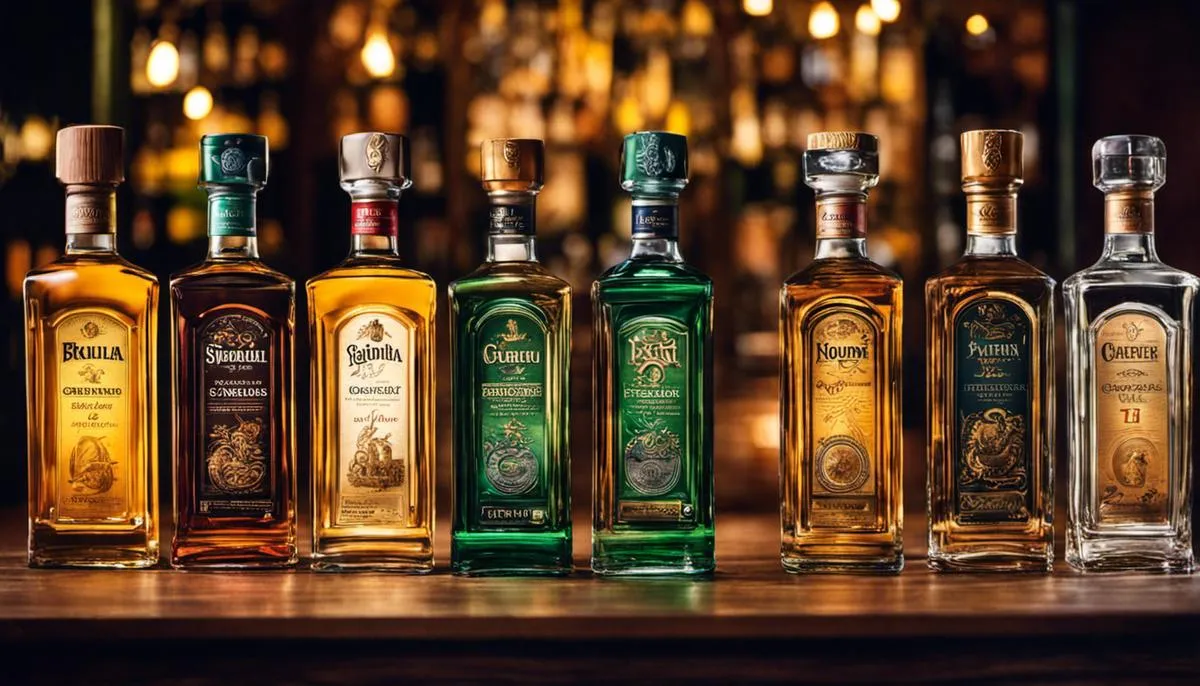
How to Take Tequila Shots Properly
Preparing for an Authentic Tequila Experience
There’s more to a traditional tequila shot than merely pouring and gulping down the liquor. To fully appreciate it, there are a few essentials to have in your arsenal:
- Top-notch tequila: While you might get away with a budget tequila for a margarita or paloma, when it comes to savoring it straight, it pays to invest in a superior-quality bottle. Blanco tequila, untouched by aging, delivers a clean and distinctive palette, making it the perfect choice for shots.
- Salt: A time-honored accompaniment to tequila, salt is part of the traditional shooting ritual. While common table salt gets the job done, gourmet choices like Himalayan pink salt or sea salt can inject a layer of sophistication to the experience.
- A lime wedge: The zesty tang of a lime wonderfully balances the robust aftertaste of tequila, enhancing its sharp and subtly sweet nuances.
The Lick, Sip, Suck Technique
This is the common way most people worldwide take tequila shots. It’s an engaging process that adds zest and camaraderie to the tequila shot experience.
Lick: Begin by dampening a spot on the back of your hand between your thumb and index finger with a bit of lime juice. Sprinkle some salt on this area. Before you take the shot, lick the salt off your hand. It helps in dulling the harshness of the alcohol.
Sip: Sip the tequila next, savoring the flavor. Quality tequila is a sensory journey for the palate, offering notes of sweetness, spice, or savory flavors depending on the specific brand and type of tequila you’ve chosen.
Suck: Immediately after swallowing the tequila, bite or suck on a slice of lime. The acidity and citrus flavor of the lime further serve to quell any harsh aftertaste, providing a cleansing and refreshing conclusion to the shot.
It’s important to pace yourself while taking tequila shots. Drinking responsibly ensures you’ll fully enjoy the experience.
The Mexican Style
While the aforementioned method is a global standard, in Mexico, locals prefer a more straightforward approach. Often, a shot of good-quality tequila will be enjoyed slowly, sipped rather than thrown back, in order to appreciate its flavor complexity. Accompanied by a chaser of sangrita—a blend of tomato juice, orange juice, and hot chilies—it’s an authentic Mexican approach to bring out the earthy flavor of the tequila.
Enjoying Tequila Shots
When indulging in tequila shots, it’s important to consider that everyone’s taste and tolerance may vary. If the traditional ‘lick, sip, suck’ method doesn’t appeal to you, take your time to savour the shot by sipping it slowly. Alternatively, find a chaser that suits your preference. The key is to appreciate and enjoy the complex flavors a good tequila shot offers, always doing so responsibly and in good company.
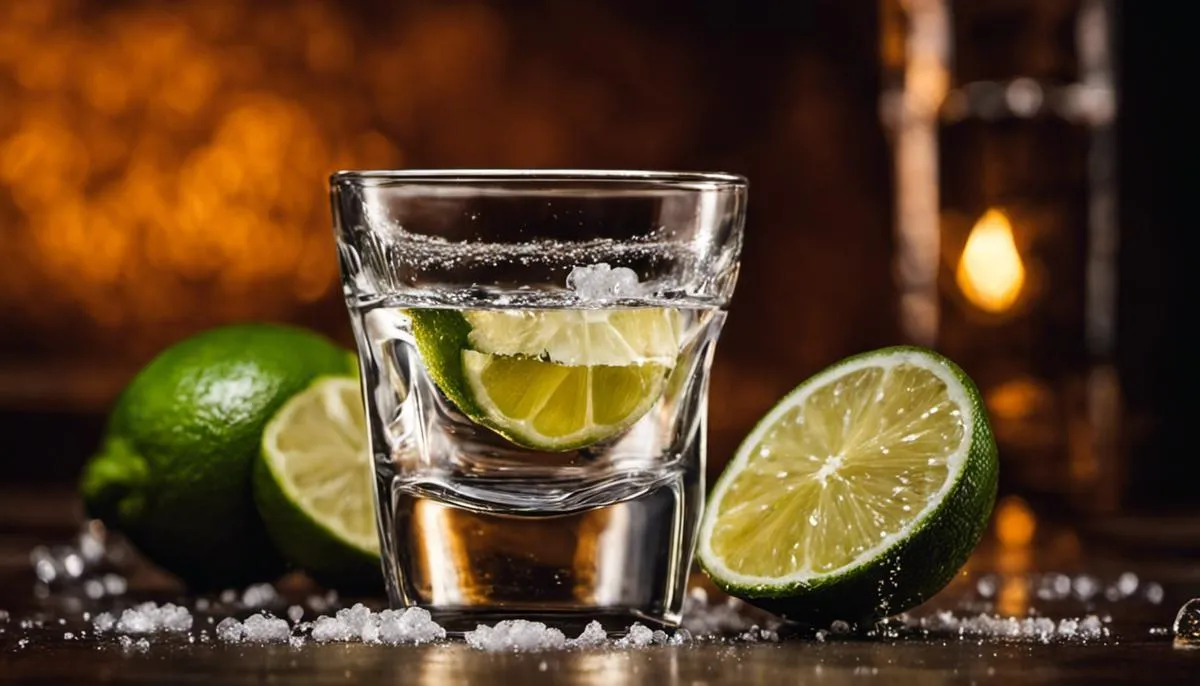
Food Pairing and Tequila Cocktails
Enhancing the Experience with Food Pairings
To further enrich your tequila experience, consider pairing your shot with the right kind of food. Much like wine, the varying flavors of tequila can be enhanced when complemented with certain dishes. Lighter, subtle blanco tequilas make a great pairing with light dishes like fish or salads, while the richer and more full-bodied reposado and añejo tequilas stand on their own against hearty dishes such as steak or spicy foods.
To begin, you might want to pair a blanco tequila shot with a fresh shrimp ceviche or perhaps a tangy mango salsa. These combinations accentuate the tequila’s herbal and oceanic notes. For a main, grilled or slow-cooked meats like pulled pork draw out the deeper notes of vanilla and oak in añejo tequilas. Round it off with a piece of dark chocolate alongside a shot of reposado tequila, this pairing will accentuate the tequila’s caramel and roasted agave notes.
Tequila Cocktails
While tequila shots are a popular choice for many, tequila based cocktails are a fantastic way to enjoy the spirit. The margarita is the most famous tequila cocktail, and for good reason. This refreshing drink combines tequila, fresh lime juice, and Triple Sec (an orange flavored liqueur) for a vibrant, citrusy cocktail.
For a twist on the classic margarita, try the strawberry jalapeno margarita. This drink adds a spicy kick and a sweet undertone to the traditional recipe. Simply muddle a couple of slices of fresh jalapeno and some fresh strawberries in a shaker before adding your tequila, lime, and Triple Sec.
Another popular tequila cocktail is the Tequila Sunrise. The Tequila Sunrise is a colorful cocktail made from tequila, orange juice, and grenadine syrup, which gives it a beautiful gradient effect, mimicking the colors of a sunrise. The sweetness of the grenadine and the acidity of the orange juice balance out the strong taste of the tequila, making for a pleasing and palatable drink.
Remember, the key to enjoying tequila, whether in shots or cocktails, is to start with a quality spirit. With a good tequila as your starting point, you can experiment with different foods and mixers to find your perfect pairing.
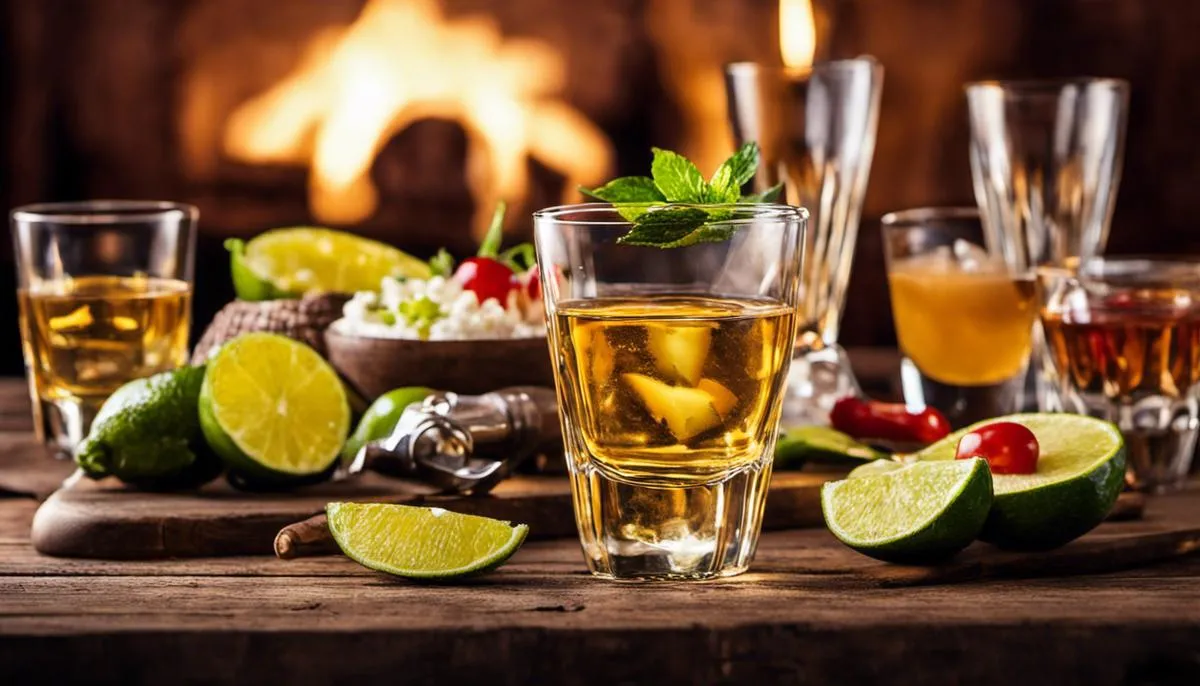
With a new appreciation and understanding of tequila, we can now confidently navigate our way through any tequila-related conversation or experience. The next time we pick up that finely crafted bottle, peer down at a salt-rimmed glass, or partake in the time-honored tradition of the tequila shot, it’s no longer just a drink – it’s a story. A story of rich Mexican heritage, of meticulous craftsmanship, and of our own growing appreciation for this spirited beverage. From choosing top brands and quality types of tequila, to mastering the technique of tequila shots, and even to pairing it expertly with foods or blending into cocktails – we’re well-equipped for our tequila journey ahead. Here’s to a finer, more flavorful future filled with tequila!





